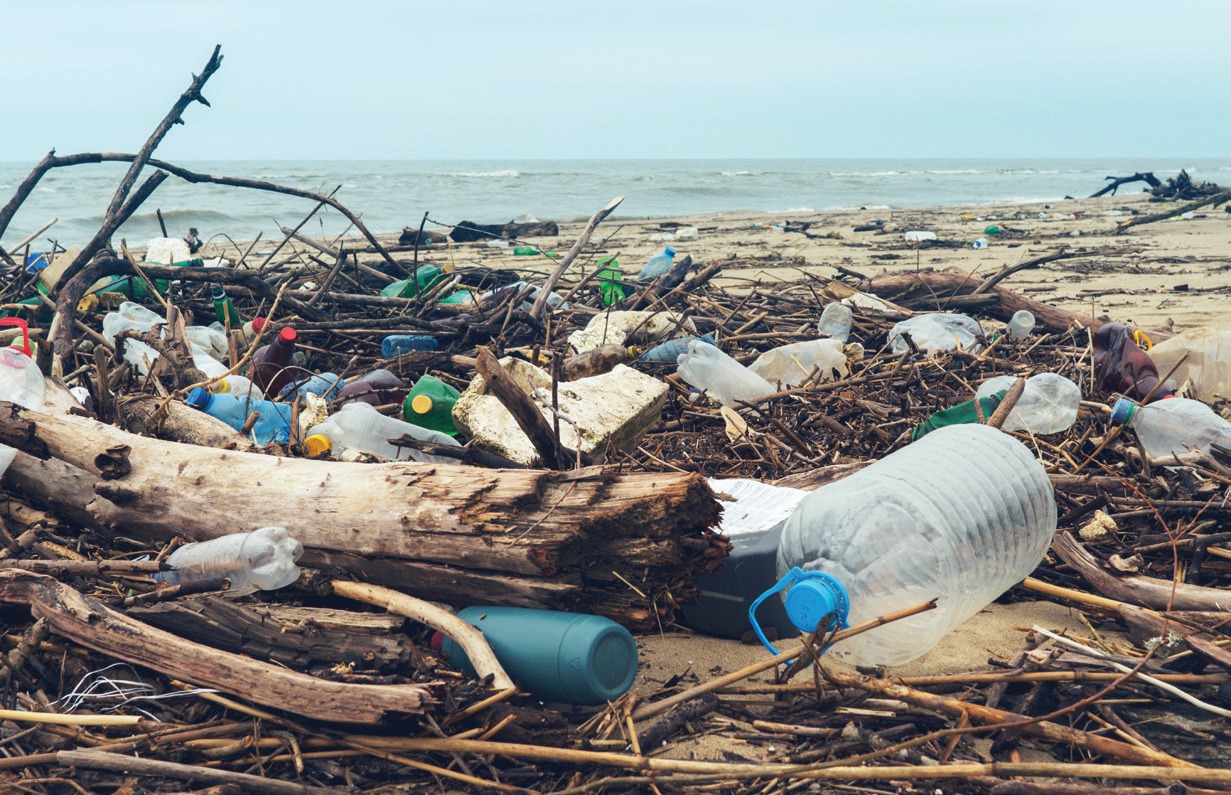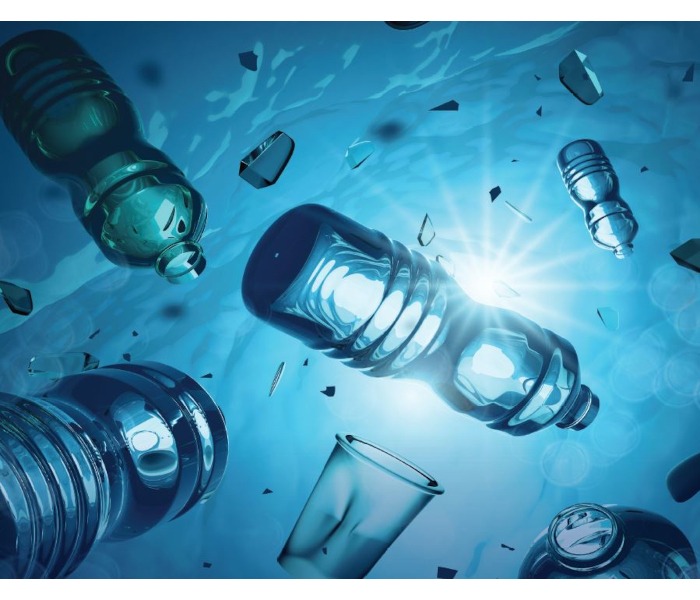Through investment, innovative projects and start-ups, the Alliance to End Plastic Waste is committed to removing plastic waste in the environment. To learn more about how it is doing this and its progress against targets, Matthew Rogerson speaks to Nicholas Kolesch, vice-president of projects.

The subject of plastic packaging waste is an emotive, hot topic. Consumers are concerned that we are not doing enough to prevent vast quantities of plastics infiltrating our oceans and land, and brand owners and their supply chains are trying to find a way to keep using a material that maintains its engineering excellence without causing the waste that leads to consumer discontent. Enter the Alliance to End Plastic Waste, formed in January 2019. Its mission is to end plastic waste through collaborative and collective action. Over 80 member companies, project partners, allies and supporters are committed to ending plastic waste in the environment.

“Our goal of ending plastic waste in the environment is multifaceted and takes into account that there are a number of different solutions out there,” explains Nicholas Kolesch, vice-president of projects at the organisation. “One of our first actions was to identify a number of themes that we wanted to work around and on that could address this plastic waste challenge in many ways.”
The themes are linked to the alliance’s founding pillars – in infrastructure, innovation, education, engagement and clean-up. And, as time has passed, it has further identified a number of other important thematic areas too.
“The first,” begins Kolesch, “is getting communities on to the waste management hierarchy. This is to ensure solutions or projects make sure plastic waste and other waste is collected. So far this is mainly engaging with cities – improving collection, sanitation and essentials needed to put a waste management system in place. There are a few projects in this area, putting in an integrated waste management system for a specific community.
“The second is creating value for recyclates. Specifically, how to drive demand generation for plastic waste, so there is an incentive to effectively get it out of the environment. How to collect and valorise plastic at scale. There will be some announcements in the coming months of new projects that are effectively driving that value for recycling. I think the foundation is the recognition that plastic waste absolutely has value as a waste, and it can be recovered.”
Kolesch calls the next theme ‘advanced recovery and recycling’. As the name may indicate, it’s about looking at technologies that can improve the segregation of the waste. “Plastic waste is collected through advanced recovery, but there’s also chemical recycling or advanced recycling, where different technologies can be deployed to bring value to what would otherwise be seen as very low-value plastic waste. We are looking at a number of partners for this that can implement chemical recycling facilities, as well as those technologies that can be utilised in support.
“The fourth area is improving the ability of plastic waste to be valorised in the future – so really being a participant in the circular economy. This includes the simplification of plastic products, of packaging and more, which can drive and ease recycling.” And Kolesch describes the final pillar, “Societal behaviour. We recognise we all have a role to play in addressing the plastic waste challenge. As consumers, we all need to be aware of how we’re interacting with both what we buy in terms of packaging and products, as well as how we treat it when it’s reached the end of its use with us. This is building on the education and engagement pillar of the Alliance, in addition to collaboration with governments and other producers.” It’s a worthy assault on prevailing wisdom.
Plastic misconceptions
Kolesch is under no illusions as to where the biggest challenges are: life-cycle analysis and comparisons or material alternatives. And, perhaps surprisingly, he also continues to see the presence of plastic in the future of packaging, albeit firmly nestled in a proper and effective circular economy. “If we take a very broad view, what is the most efficient and sustainable way to provide goods and services for all people on the planet? Plastic packaging has its place, and is probably the most carbon-efficient method to protect and pack all those goods to fulfil demand.
“The key misconception, mainly among consumers, is that alternatives are better than plastic. Various materials have their place in various applications. I think most of the studies that we have come across – and most of the scientific work – is showing that plastic packaging solutions have the best life-cycle assessment.” It’s a radical, though realistic, perspective.
The challenge comes with ensuring the creation of a proper circular economy – and that, by extension, the plastic does not continue devolving into waste.
“When we look at the waste characterisation studies for our projects,” Kolesch continues, “it differs depending on the socio-economic level of the community that you’re engaging with. The reality is that plastic waste is usually about 15– 20% of the waste stream coming out of a typical household. Despite being about a fifth of the actual waste, it is highly visible and leads to the conception that plastic waste is a bigger problem than it is; the reality is there’s a waste management problem.
“What is critical is understanding effective waste management and implementation of end-to-end solutions. That is why there has been a focus in a number of our projects to create a basic level of waste management for a community. Then, we look at how to make use of what we can recover through this system, whether recycled or upcycled, but focus on raising the amounts, and apply these to communities that might not have had access to these solutions before.”
Pandemic impact
The Covid-19 pandemic has altered the alchemy of processes, and necessitated a very different approach to how the organisation conducts itself. “The biggest problem has been the move to remote working, and being able to still connect with our projects across the world. It is not ideal, but we have made it work. We have been quite effective in working remotely with our project partners. For the most part, our projects are advancing, with only a couple facing any significant delay; even then, we are able to manage it.
“We have quite a strict process to work with our project partners to develop something that is achieving the goals that we and they have. While, ideally, this can be achieved on the ground, this is one of the areas impacted by Covid-19 – though we are managing remotely.”
If the alliance’s global aspect has been shaken by the pandemic, the breadth of its objectives has not been dampened. “The focus is on targets to achieve,” Kolesch assures. “Removing plastic waste from the environment, preventing it getting there in the first place, engaging with communities and stakeholders, and more. We aim to have projects that fulfil these objectives across those five themes mentioned earlier.
“We have recognised from the beginning of the alliance that the challenge of addressing plastic waste isn’t one of lack of waste management systems. A lot of our funding is going into projects on infrastructure that can put in place those waste management systems. Today, we have more than 20 projects that are running at various stages, and we typically have quite a few more that are coming through and adding to the total. It’s a constant stream.”
The continued deployment of projects is integral to sharpening the organisation’s methods of enacting change and spreading the message. “Our cities’ initiatives are looking at advanced recovery and recycling projects,” Kolesch says. “The first one this year was the advanced recycling for chemical recycling project proposals, and we are about to launch some RFPs [request for proposals] for creating value for recyclates.
“Another exciting angle and direction is what we call PRISM [Plastics Recovery Insight and Steering Model], which is our recovery insight model. This is a robust tool we have developed that effectively brings together all data that is out there for municipal solid waste generation, plastic waste generation, plastics consumption, as well as existing legislation such as EPR [extended producer responsibility, which holds producers accountable for the plastic waste they put into the market]. We are hoping to put together a detailed overview of what the world of plastic waste looks like. With this information, we feel we can learn where best to focus our resources.”
Although this may be a perilous moment in human history, it is, according to Kolesch, also an exciting one. “It is a fascinating space to be in.” There are hopes that with programmes like PRISM, information can fill in the gaps of effective projects. “We can identify where we need to focus more, and get an accurate picture of the size and the shape of the problem in the different areas we are looking at.”
And the focus is on the globe as well, with the organisation expanding its outreach and understanding. “There’s been a lot of learning, I would say, in the first 18 months to two years of the alliance,” Kolesch concedes. “What we have found is that, in every community that you’re in, there’s always a chance to do better, and there’s always this possibility to move up the hierarchy. There’s potentially a lot of plastic waste that goes to incineration, where the full value of that plastic waste is not extracted, because it could be turned back through chemical recycling into a monomer.
“There’s always an opportunity to do better. And I think that’s what we’ve identified. It’s about getting on and moving up the waste management hierarchy, and it’s driven us to look at very interesting projects in very different parts of the world.”
